“It is truly meaningful that I spend my second life on contributing to the world.”
2022.02.16
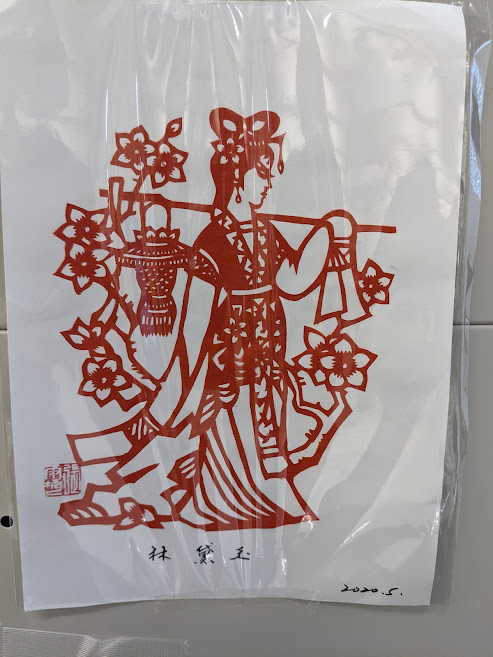
I am Chinese who live in Japan. My wife is Japanese orphan who remained in China after WWII. We have moved to Japan 22 year ago. Still now, we live in Japan. I was born near Anyang, Henan province. My hometown is well known as a cradle of Chinese culture and famous for its cultural heritages. Heritages of Yin dynasty and ancient Chinese hieroglyphic characters left on bones and tortoise carapaces are especially popular in the world. My parents were teachers. Under the culturally rich environment, I was deeply interested in music and arts from young ages.
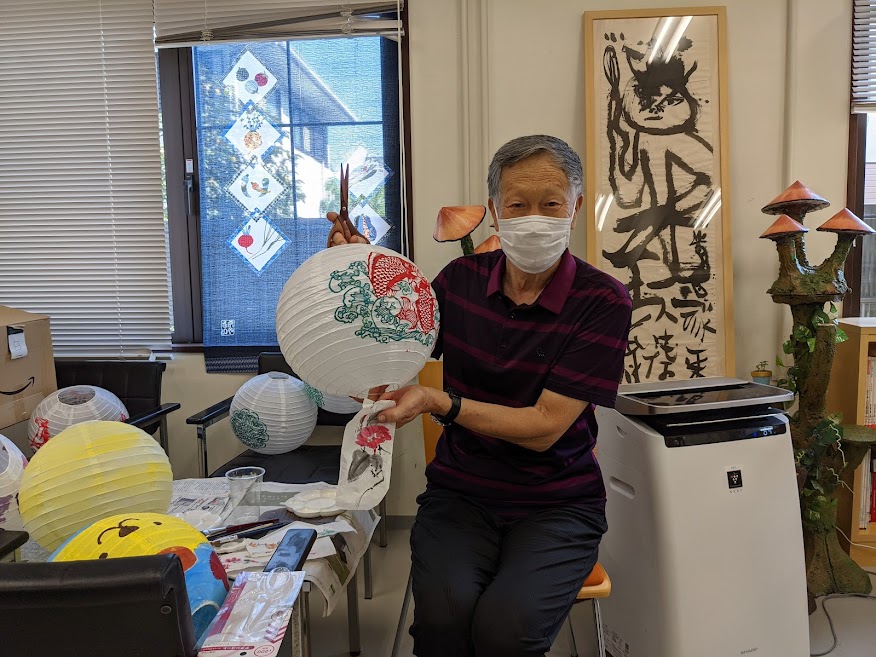
When I was small, I was not good at using a writing brush, so I was often beaten my hand by my parents using a hard bamboo board. When I was an elementary school student, I always used a writing brush even when doing home works. From 3rd grade, I started learning “Da Kai” (Chinese traditional font). The basis of my ability of Chinese calligraphy had been established at that time.
At the stage of youth, I could not go to school to study arts because of some difficulties and challenges caused by social situations and family reasons at that time. After that, I got a job at a labor union in a factory. Fortunately, I got a chance to use a writing brush again on work there since I had opportunities to write slogans or write news on a black board. On the other hand, I worked as a designer of shoes at a shoes factory, where I have developed my skills of using knives which is a basis of paper cutting art.
After 4 months since I moved to Japan, I got a job at a shoes factory. I had no choice but to have a blue-collar job since I did not understand Japanese. Even though the job was tough, I was actually feeling relieved since I was able to make living by myself without leaning on anyone. However, since I was a curious person, I was not satisfied with my job. At that time, I came to know by chance that the factory was disposing of unneeded papers as a garbage. I asked the manager of the factory for permission to use the papers to practice a writing brush. After that, I moderately started practicing it at a corner of a room at break times in the morning and afternoon, when other colleagues were taking a rest while drinking teas and chatting. When I was off, I also practiced using a writing brush at home using newspaper. Like this I had trained using a writing brush for ten years. At the same time, I took a correspondence education at a school of calligraphy in Tokyo and got a certificate one year later. Around this time, finally, my colleagues understood my efforts and complimented me on my writings. While working at a factory, I made a lot of writings including a drawing of buddha to put in front of buddha at the president’s house, and a letter of “Shan Mai Fan Sheng” (Prosperous business) on a hanging scroll to hang on a wall of the factory.
In 2006, I retired from the factory at the age of 66 due to my health conditions and other reasons. The new life, being at home all the time without doing nothing, was hard to get used to for me since I had always been so busy in China and Japan for decades. At the timing, my friend introduced me of Hyogo Kikokusha Shien no Kai (a group to support Kikokusha, Japanese orphans who came back to Japan, and their family). I gradually started joining the interaction activity. After that the interaction activity became more exciting and I made friends with a lot of people there. I got a lot of hobbies including music, which I had almost forgot for decades. Erhu (Chinese violin) and harmonica are instruments that I loved so much when I was young. When playing them, I feel so excited and happy.
Let’s talk about paper cutting arts again. One day, when I went shopping at Kobe Nanjin town, I saw by chance that a picture of a cute girl was printed on a plastic bag of a shop. Looking at the picture, I thought that it would be fun if I made a paper cutting art by pasting that picture on a paper. After going back home, I immediately tried it and found out that it was far more beautiful than expectation.
After that, I drew a lot of pictures such as “Fu” (a Chinese character meaning lucky), “Shou” (a Chinese character meaning a long life) and Butterflies based on my original theory and skills of calligraphy.
Later, I drew more and more pictures including 12 horary signs and characters such as Confucius, Guan Yu (a famous warlord), 12 ladies in Hong Lou Meng (a Chinese ancient masterpiece), Venus of Mercy and characters in Chang Er Ben Yue (a Chinese ancient tale).
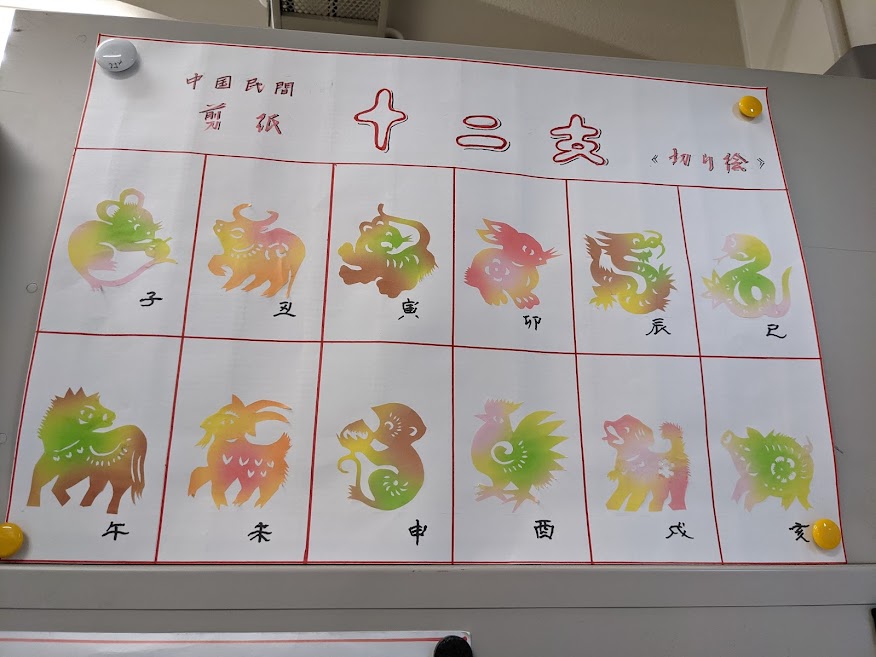
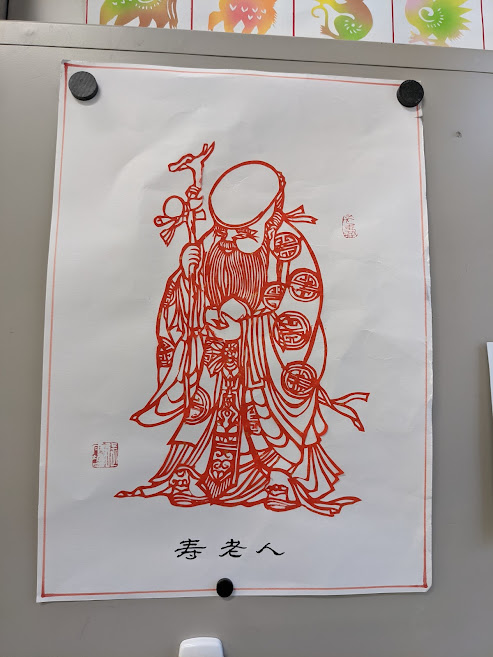
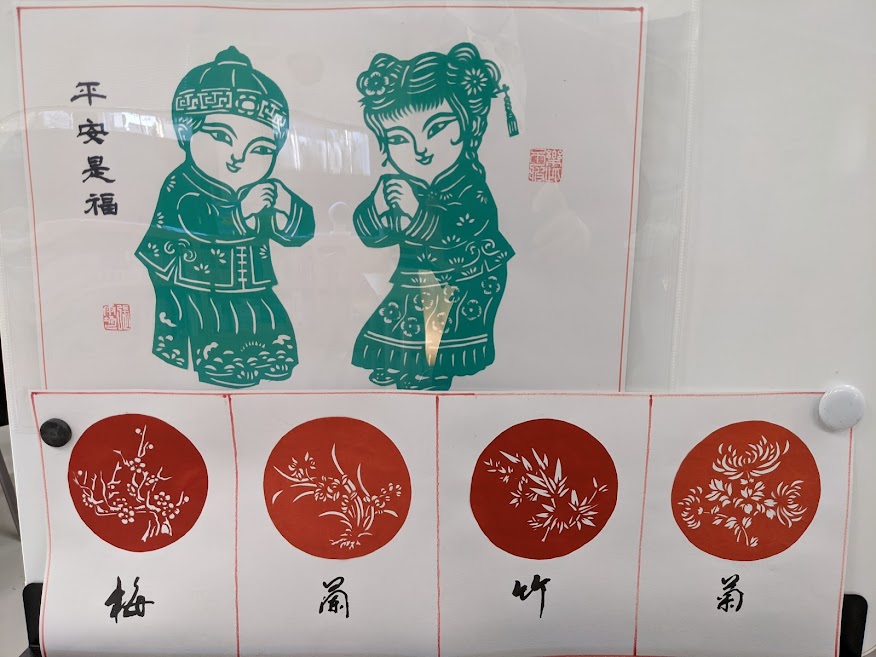
When I was back China, I often visited exhibitions of calligraphy and saw a lot of writings and works made by famous people in the world of calligraphy and paper cutting arts. When I was travelling in Tai Yuan, I luckily got a chance to visit a house of Mr. Xin, who was an individual artist in China. My friend introduced him to me. At that time Mr. Xin showed me his work “Qing Ming Shang He Tu” which is a 6-meter long art work. We could discuss paper cutting arts a lot. The art skills of Mr. Xin were what Mr. Xin learnt from his ancestors.
After retirement, I got an idea by chance to draw pictures of characters in Chinese ancient masterpieces and myth legends, and also to write idioms derived from classical Chinese literature such as “Shou Zhu Dai Tu” (wait every day under the tree, in the hope that a hare would kill itself by crashing into a tree trunk) and “Lan Yu Chong Shu” (to be included in a group just to fill in a vacancy). On Chinese New Year, I paste my works on postcards and send to my friends and teaches of Japanese class every year. Until now, my works has been published on many media such as internal publication of Kikokusha group, You Lin News and News published by Kobe University of Foreign Studies. In addition to that, “Zhong Wen Dao Bao” (Newspaper written in Chinese for people who live in Japan) has used my works using stars twice on their page of new year’s greetings to send to Chinese people living in Japan. When the newspaper company called me to express appreciation, I was so happy. Another case was that I was invited by elementary schools twice in interaction events. I taught paper cutting arts and performed how to do it. From 2009 to 2013, I held solo exhibitions of calligraphy and paper cutting arts for four times around Kakogawa under the organization and cooperation by Japan-China Friendship Association. Recommended by the Association of Elderly in the town, I also joined exhibitions for elderly people last year and two years ago in Himeji and my town. At that time, I exhibited a Nurse of Mercy, “Chang Er Ben Yue” and Guan Yu in Sangokushi. In 2013, I was chosen as a judge of Kikokusha Calligraphy Competition by Kikokusha Settlement Support Center for the first time. I was praised by both Chinese and Japanese visitors for my work “Bai Cai Die Ji die Tu”. Last year, I was able to exhibit my calligraphy “Qing Feng Fu Liang Xiu Huai Ming Yue Man Yi” to the Kikokusha Calligraphy Competition.
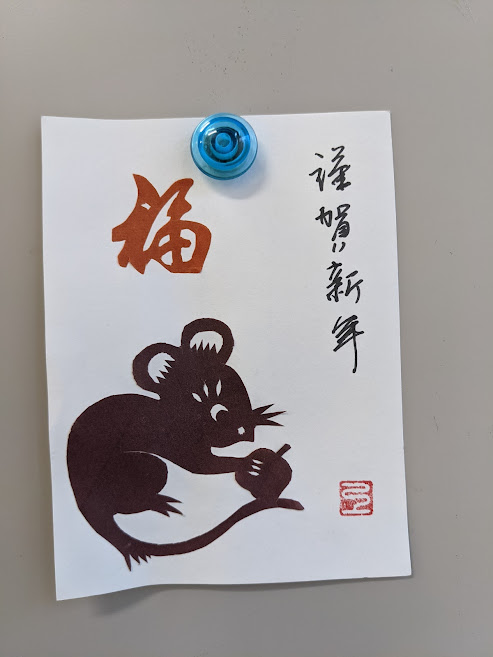

I feel so happy when visitors appreciate my works. I feel so happy when children are excited by my paper cutting arts at school. I also feel so happy when people are surprised by my skills at Japanese classes in Kobe and Osaka. I am just an old man who is gradually losing my memory ability. For me, by making efforts to learn and continuing creative activities, I can be free from a sense of loneliness, and sense of helplessness. When I immerse myself in one thing and focus on it, I even forget that I am getting older.
From the perspective of friendship between Japan and China, I think calligraphy and paper cutting arts can be a bridge and good tool for grass roots interaction between people. I will continue to make efforts on showing better works to everyone. Just like a saying “It is truly meaningful that I spend my second life on contributing to the world.” …